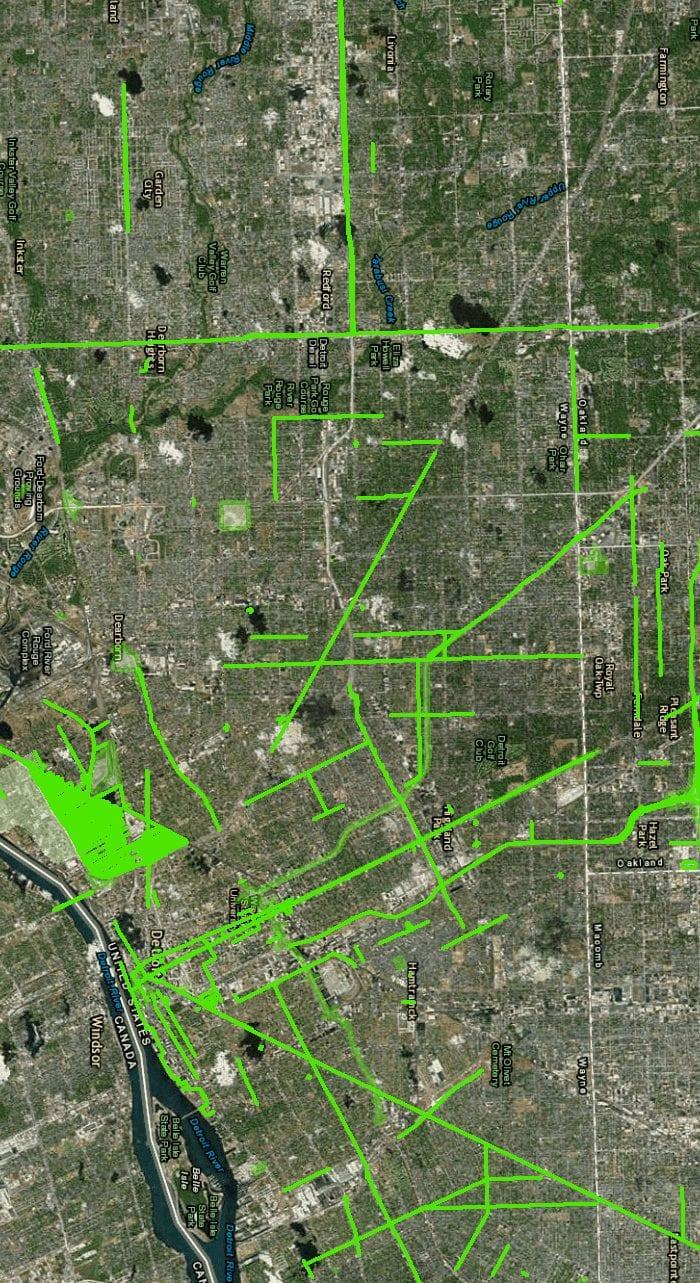Providing Fort Hood’s Directorate of Public Works, commanders and other officials real-time pictures of how their decisions impact on the installation, the Installation Geospatial Information and Services office plays a critical role in providing geospatial awareness for virtually every aspect of operations.
“We can give a unit commander a visual idea of his (or her) footprint – where all his (or her) companies and personnel are located,” Russell Barfield, the Installation Geospatial Information and Services manager, explained. “We play a role in master planning to help them see what decision they make and how they affect other things.”
With more than 500 data sets and multiple layers of maps to work with, Barfield said GIS is a service that can be used for just about any purpose, by just about anyone. He said the maps are presented both spatially and geographically, so they can be as detailed or as basic as a person needs them.
DPW currently uses GIS to help keep track of utilities, specifically where utility lines are located, which is helpful when estimating costs for a new building. Barfield said if the location needs, for example, water or electric, DPW can factor the costs into the overall budget. DPW also uses the system to track the status of every building on Fort Hood, with information about what (if anything) is wrong with a specific building. Barfield explained that following the snow storm in February, DPW was able to use the system to provide visuals on how many buildings were affected by the storm.
At the unit level, he said a lot of Soldiers come to the office when preparing for convoys or field exercises, showing current road closures and alternate routes. Barfield explained that they have access to commercial satellite imagery, which when overlaid with hill shading, along with aerial photography, gives maps a 3D look and much greater resolution. He said it really helps commanders plan routes because they can actually see gullies and ravines, areas their vehicles may not be able to safely move across. He said they also maintain some data outside the installation for units convoying to other areas, using Force Protection data to analyze problem spots, if any.
Noting that the safety of the Soldiers is at the forefront of their minds, Barfield said they work with military police to create collision heat maps to show Fort Hood’s Directorate
of Emergency Services and DPW’s traffic engineer where the preponderance of accidents occur and how often they occur.“When we get a hotspot, the traffic engineer and DES can take a look and determine if there’s a problem there,” he explained. “Do they need more speed enforcement in that area? Do they need to reconfigure that area?”
Sgt. 1st Class Israel Barreto, operations noncommissioned officer with the 11th Military Police Battalion, 89th MP Brigade, said he went in with a basic idea of what the MPs needed and they turned it into something more.

“(They) Created something we now use on a day-to-day basis and has even been used to brief the CG (commanding general) during the Quarterly Crime Prevention Brief,” Barreto explained.
Barfield said with the GIS mapping, they can also determine how severe weather will affect the installation.
“We have a hydrology data set for every creek tributary on Fort Hood,” he said. “If we dump three inches of rain at Owl’s Creek Tributary, we can see how that’s going to affect things downstream.”
While the data could be used to determine if specific roads in the tactical areas should be closed, he said for overall safety, Range Control normally just closes all low water crossings as a safety precaution.
He said a detailed map, showing all the real property on Fort Hood, can be found at
https://igis.hood.army.mil/arcgis/home
. Barfield described the map as similar to Google Maps, but just for Fort Hood. Once logged into the system with a common access card, users can look up specific building numbers using the search bar or simply click on a building. Basic information about the building will pop up, including a link to submit a work order for the building. The map is completely interactive, allowing users to turn layers on or off, see specific information they want and more.
Barfield urged people to come in and see for themselves how the system can be used. Pie charts can also be imbedded to enhance the informational aspect when presenting the information via PowerPoint.
“We develop this information for consumption and it’s not good if people aren’t consuming it,” Barfield added. “We always want our customers to come in and see us, that way we can develop the product they need, instead of them trying to describe it over the phone.”




